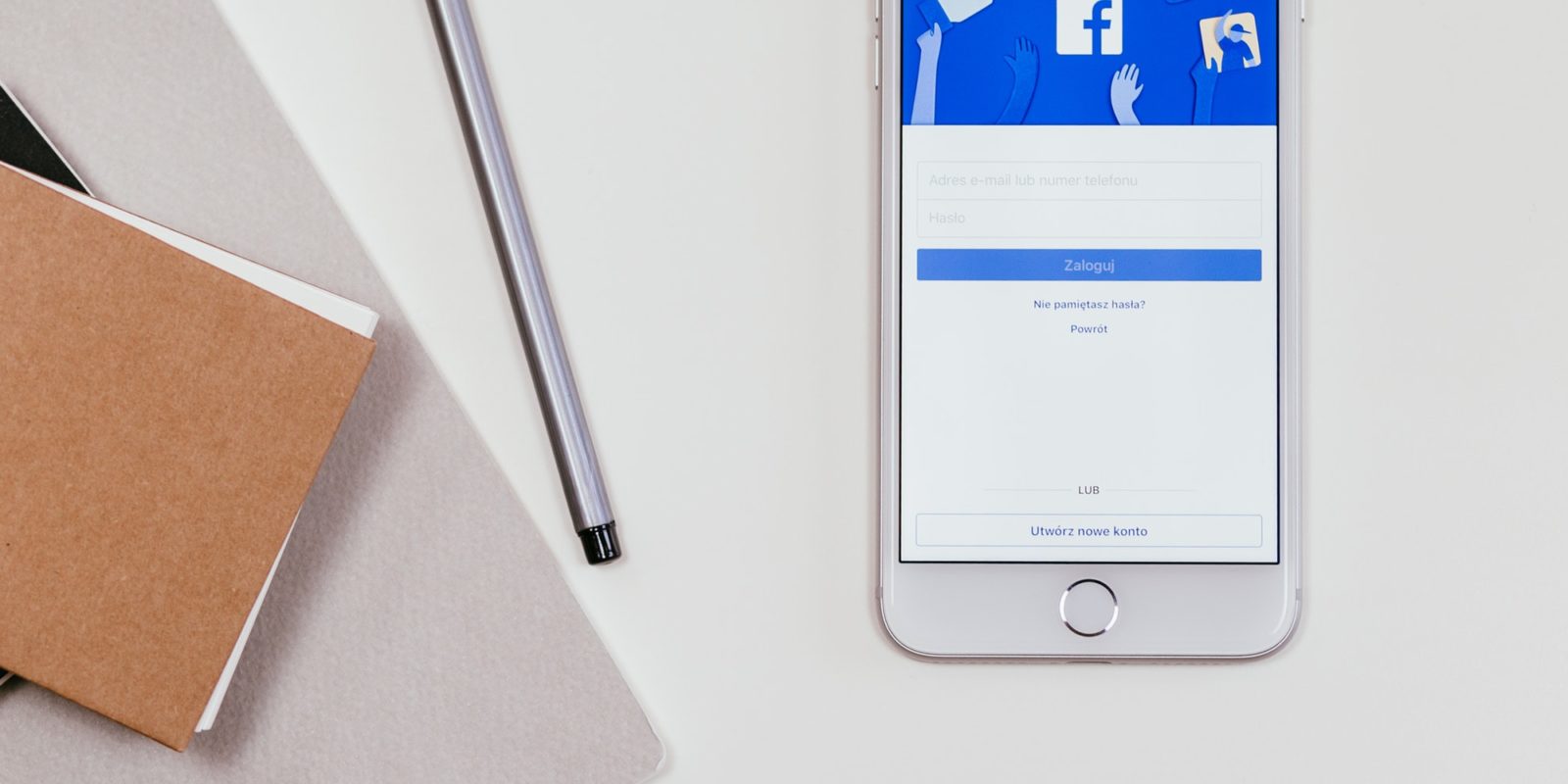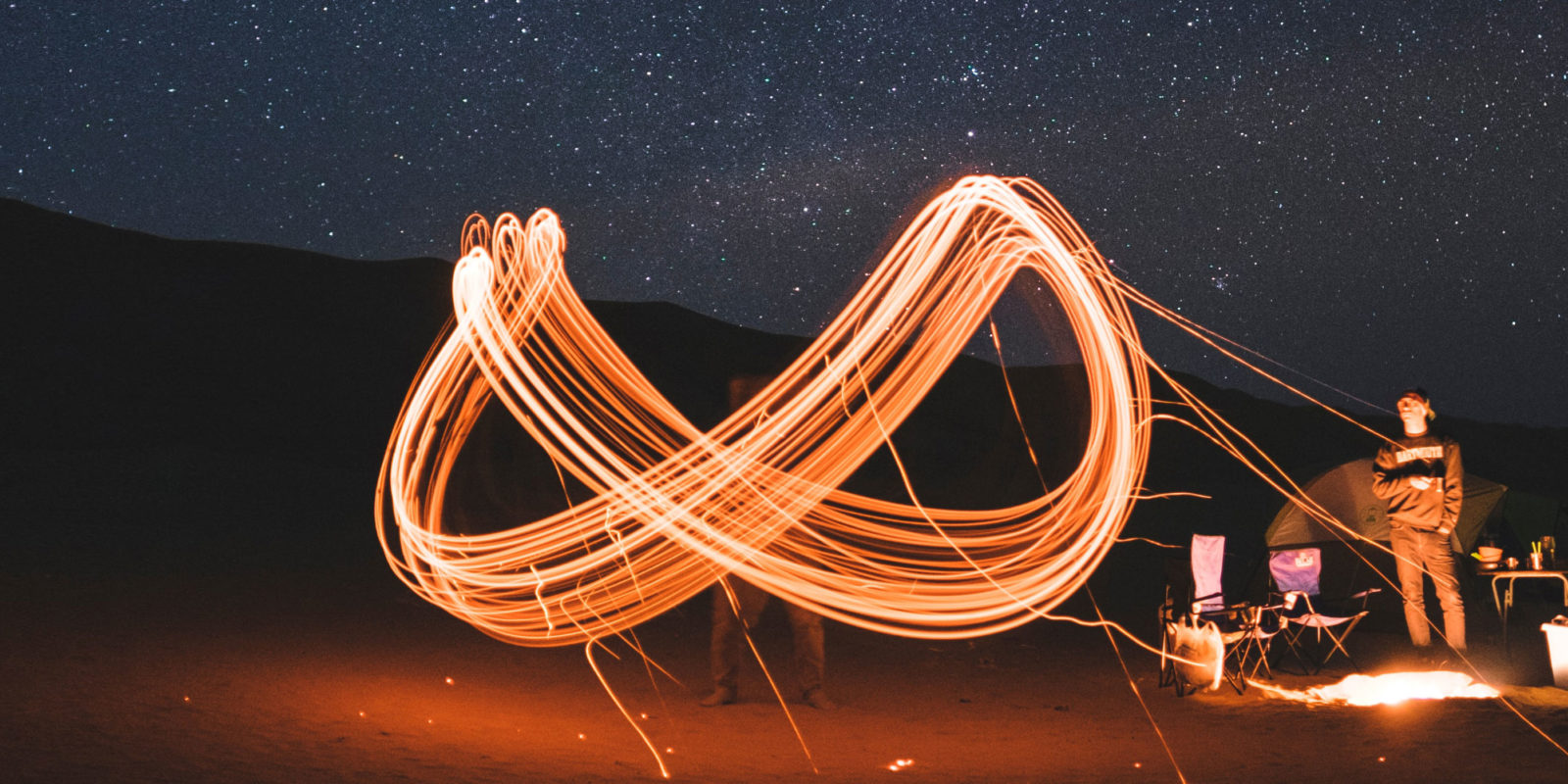If you were lucky enough to attend the 2018 Yearly Carnage event, you most likely noticed that the speaker lineup was diverse. Our goal was to avoid creating yet another boring hotel banquet hall marketing conference.
One of the speakers that fell outside of the typical marketing persona was designer and typographer Daniel Gurwin. We had a ton of positive feedback about his talk and felt the need to bring him back to open up the hood on his process.
In this episode of the Carnage Podcast, Dan provides some clarity regarding brand identity and also reveals why selecting a designer based on accountability is far more critical than an hourly rate.
Our in-house designer, Maggie Cook, joins us to ask a few design-centric questions that provide value to fostering a better client/designer relationship.
Danny is a Pittsburgh native, so we’re a bit partial, but the podcast is insightful for marketers and creatives alike. Enjoy!
Links:
Transcript:
Daniel Gurwin: (00:54) I’m Daniel Gurwin. I am a, I guess, first I’m a graphic designer. But I’m also a letter and type designer, and wear several other hats. But I can just kind of throw it all under the umbrella of designer. Primarily, I work on brand identity design, and branding. Logos, brand strategy, print materials. I really like analog stuff. Yeah. Sort of run a one-person shop. So all of the different roles that come along with that, from creative direction down to execution. Whatever it is, I just like getting in the trenches and doing work.
Nick: (01:45) Something that actually made me think of you yesterday was, I was coming back from Chicago, and coming back into Pennsylvania, I saw a sign that had your script. Tell us a little bit about that.
Daniel Gurwin: (02:01) Sure. Yeah. So that’s a really fun example of, sort of, the strange twists and turns this freelance career can have. That was an opportunity that started off like a lot of other jobs, where I got an email from a prospective client. Being relatively vague about what the project was, just kind of, we have a logo need, you want to come in and talk about it? So at first, it was sort of this normal project. And then, after I signed an NDA, realized that they had gotten the contract from the state to re-do the state’s tourism identity, and I was going to be drawing that script.
Daniel Gurwin: (02:44) So you know, just a really fun opportunity to kind of be in the right place, and just a really fun application of that skill set. Just by sheer good fortune of the nature of the project, excuse me. Now it’s something that’s going to be up for a pretty long time, so. That sort of stuff’s really exciting. The stuff I don’t necessarily have control over. The stuff that’s really the good fortune and luck of just the business.
Maggie: (03:18) That’s honestly, when I first got into design, that’s what pulled me to this direction, was the idea of having something you created visible to everybody. And it’s just kind of cool that you’ve gotten to that point, and that’s awesome.
Daniel Gurwin: (03:34) Totally, thanks, thanks. That sort of mentality of leaving artifacts behind you in this world is something that I’ve always adhered to. Whether, it wasn’t always design. But just sort of that mindset. Make things, leave them behind. I think it’s a good way to approach the world.
Nick: (03:55) So let’s talk about brand identity. I think a lot of our clients, it gets a little bit hazy, when we use this term. They often think of it as, simply, a logo or a font. Can you help clarify this to our audience?
Daniel Gurwin: (04:13) Let’s start really, really small with a logo. A logo is a specific mark or icon or emblem that is meant to represent the name of a brand, for recognition. That’s how I got started off. Making these singular marks. And a lot of times, these sort of simple marks are what we see on Instagram, referred to as branding or brand identity. And it’s part of those things, but it’s not entirely those things. A logo is part of a brand identity, in such that it supports the look and feel, visually, of that brand. So it’s not limited to just the logo. The brand identity is the logo, it’s the way typography is used, those fonts, the feel of those fonts, the color palette, the photo styling. Anything that’s a visual expression of the tone of that brand is brand identity. How that brand looks.
Daniel Gurwin: (05:25) Now, if we go one step broader, just to talk about brand, or branding, that larger umbrella beyond brand identity begins to encompass brand voice, messaging, strategy, and all of those things that inform the sort of larger ecosystem of the brand as a business, and not just as a designed element. And those two things sort of shake hands at the intersection of brand identity. So logos and business strategy have very little to do with each other. But brand identity and branding are the tools and decisions and strategies that are employed to bridge those gaps and to use design as a strategic tool to achieve business goals, or social goals, or culture goals, or whatever it might be. But that’s how I would define, sort of, the ecosystem of brand, brand identity, and logo design.
Nick: (06:28) Yeah. I love this. And this is why, in our last podcast with Maury from Bumble, he talked about, from a marketing standpoint, needing to collaborate with the creatives better. Early on in his career, he chose, I think, an image, or something for an ad that was completely off-brand. So I think, sometimes, people, marketers, especially, maybe put creatives in a box. And don’t consider it when they’re making decisions on a campaign. But as you’re saying, here, too, it goes hand in hand.
Daniel Gurwin: (07:06) Absolutely. And I think that it’s very easy to look at design as a want more than a need. When you’re breaking down a budget, or sort of figuring out what you’re initial moves are going to be.
Maggie: (07:19) What are some top design mistakes that you’ve seen, working with clients? Or ways in which a client can work with designers to fix these things you’ve seen?
Daniel Gurwin: (07:30) One of the most easily avoidable big mistakes that I see is, sort of in a creative brief, or in a request, pointing directly to other brands and other logos and saying, “I would really like something that looks like this. With this name. And maybe a picture of this on the top.” And while that seems like an innocuous request, and maybe even a productive request, I think unknowingly what that client is already saying is, “I’m sort of locked into an aesthetic in mind. I have an expectation, aesthetically, that I’m either going to be disappointed or I’m going to be pleased, in that regard.”
Daniel Gurwin: (08:14) So we’re either reprogramming that, or trying to modify expectations off the bat. And then, pointing to anybody else sort of as the end goal in general is automatically saying that even if you do the best you possibly can, you’re going to be second best. So I think that, when starting a new brand, just be really open to the idea of starting with a blank canvas. Don’t feel a need to point to something, or tell the designer what all of the elements of the brand need to be, because that’s why you’re hiring the designer.
Daniel Gurwin: (08:44) The designer should tell you, “Use this paper, it’s going to support the tone that we’ve created.” Or, “Let’s edit our photos with this sort of filter, because that’s going to produce this sort of tone.” And let them build the system with you. Let that grow, and don’t try to prescribe it. That’s, I think, the biggest problem off the bat, is just pointing to something, hoping that you look exactly like that. It’s especially, again, to go back to the fact that we’re really in an e-commerce world, for a lot of these brands that we’re talking about.
Daniel Gurwin: (09:22) You can’t play local or regional games, you know? You have to approach everything as a global project. Because everything is interconnected. And if you can’t compete with every single thing that’s out there, then you’re just guaranteeing that you’re going to be second, third, fourth tier. So start with a blank canvas, let it be weird, challenge yourself to embrace something that feels new or weird. And let people grow into it. I think the future’s out there to create for people who aren’t afraid to make it.
Maggie: (09:55) Yeah, 100% agree with all of that. One thing you were taking about, starting blank, and not being afraid to get weird. One thing my professor told me while I was in school was, “Seek forgiveness, not permission.” And that’s really stuck with me. And I’m just wondering, what’s your take? And how do you work with risk-taking, and convincing clients to go a certain way, if they’re slightly hesitant? Or getting them on board with what you think is a great idea, or potentially the idea?
Daniel Gurwin: (10:28) That’s a great question. I might feel really convinced of an idea from a creative standpoint. And frankly, to a client, it doesn’t matter if it’s going to be a creative breakthrough that makes all the blogs. If it’s not a good business decision, then it doesn’t really add value. So if I’m ever trying to sell something that I truly believe in, I want to make sure that it’s something the client can also believe in. And that it’s rooted, at some point, in strategy and logic. And a lot of times, with the fresh, new stuff, it’s not a hard sell.
Daniel Gurwin: (11:02) I think a lot of people operate in a counterintuitive manner. Such that they copy things that are already out there. They mimic things. Because it’s easy, generally it’s cheap, it’s fast, it doesn’t require a lot of creativity. But if you can start from scratch, and you can create something new, the business argument’s simple. This is going to be recognizable and memorable. And recognition and memorability are just a one-two punch in starting to build a strong brand.
Daniel Gurwin: (11:38) If you have a good interaction with a memorable brand, then you’ve got a positive brand experience. But if you’ve got a, not to point any fingers again, but if I eat a good lunch in some American city, in some place with a reclaimed wooden table and black pipe fitted shelves, and all this and that, and Edison lamps, and the other thing. Whatever, sure, it might fit an aesthetic. But I’m never going to remember it as anything unique. It’s just going to remind me of a sea of Pinterest tiles. And that’s exactly the opposite of why you pay people to design. So I think that-
Nick: (12:10) I just redid my office with all that same stuff you mentioned. You’re saying it’s not the latest?
Daniel Gurwin: (12:15) I’m saying, you should embrace whatever you love in your home, as your personal style, Nick, and that’s awesome. Look at my pictures. I have black pipe shelves in my office, too. But if I was making a restaurant right now, it’s just been done. There’s no sense in trying to recapitulate something Butcher’s Daughter’s already knocked it out of the park on.
Nick: (12:38) I think rusty pipe is next. So just put that stuff outside.
Daniel Gurwin: (12:44) And if it’s not out there, it might be next. Get it started.
Nick: (12:50) What kind of advice would you give to someone hiring a designer? What’s some things they should look out for? Questions that they should ask? In order for them to get the end product that they’re looking for.
Daniel Gurwin: (13:02) Sure. I’m going to give some advice here that might be a little bit different than what most people say. I’ll give you some standard stuff, but I’m going to start with a couple weirder things. But from a broad stroke perspective, this is sort of the helpful stuff, I think, coming from the inside.
Daniel Gurwin: (13:21) One. Be prepared to have a budget that reflects the amount of responsibility you want your designer to own. Not the amount of work you want them to do, or the amount of time you want them involved, but you’re paying them to manage a problem. How big is that problem? How much do you need to trust them, to handle that solution? How is important that that solution is executed correctly? And what’s that worth? I think that’s the real calculation that a lot of people are missing. And a lot of designers are missing it.
Daniel Gurwin: (13:52) Young designers out of college, freelancing. It’s not about your time, it’s about your expertise, and your ability to use your expertise, your lived experience, your knowledge, your skill set, all of these things to solve somebody’s problem. And to solve a weird problem in a way that not a lot of people can solve problems. So, that’s sort of the first thing. Is that if you’re a business owner, understand that you’re kind of hiring this weird person to figure out a lot of kind of weird problems that you know you don’t really want to be responsible for.
Daniel Gurwin: (14:25) And understand that you’re just paying that person for piece of mind. To handle them, to take them off your plate, to assure you that they’re done well, and move on. You’re not hiring somebody who’s going to come into your office and hang out, and apply all of your favorite colors to a logo to see which one you prefer. The more a designer can take those things off your plate, and give you strategic solutions, the more valuable that designer is.
Daniel Gurwin: (15:01) So if you’re looking for somebody to handle a pretty large portion of your design load, let’s say, you’re getting started as a business. You’ve got brand identity, asset requirements that you need to create. But you’ve also got a lot of communication. You’ve got social media materials you need. You sort of have a larger strategy. That strategy, the implementation of that, the organization of all of that, understand that you’re paying somebody to manage all of those processes. And not just open up Photoshop and pick the right font. You’re asking somebody to manage timelines and processes and project timelines. So just understanding that it’s not arts and crafts time, really. Unfortunately, I wish it was.
Nick: (15:51) No, I think that’s some really good advice. I think, if someone’s starting a brand, or they’re a founder, they have so many things going on that it’s important for them to know the right questions to ask, so they don’t get halfway through the process and end up with a product that is not meeting their expectations. So I hope that if they get anything from this podcast, it’s that. How to communicate better with designers and creatives.
Daniel Gurwin: (16:22) Yeah. And I think, to that point, communicating very clearly what your strategic goals are. And as a business person, I think that all designers should understand how to speak business language a little bit better. Just as, I think a lot of business owners really do attempt to speak the design language. Especially in this day and age, with accessible tools. People know fonts, they’ll send me color palettes, they use Pinterest. Business owners, really, they’ve made a stretch into the design world, for better or for worse. Sometimes it’s great, and sometimes, like we said earlier, you get caught up on sort of expecting certain aesthetics.
Daniel Gurwin: (17:04) But I think that all designers should understand how businesses work. How they build customers, how their products are manufactured, if they manufacture products, what their services are, who their clientele … if you don’t understand a business’s needs, then you can’t create graphic solutions for those needs.
Daniel Gurwin: (17:23) So my advice to business owners would be to speak candidly in business terms to your designer about what your goals and expectations are. Let them in on what you know, so they’re solving the same problem. A lot of business owners, I think, will stand in, sort of as creative directors. Where, they still want to hold creative control, over the designer. And oftentimes, that just sort of muddies the waters a little bit. But if you can trust that your designer is intuitive enough to understand your business needs, and to kind of treat them as a collaborator, I think you can get the most out of the experts you hire, and you can really let them shine, and show you what they’re capable of.
Maggie: (18:13) Changing paths a little bit, you blessed us with your wonderful “social media is not the end goal” talk at The Yearly Carnage in April. And one of the biggest takeaways, at least I got from it, was being your own critic, especially on social media. How we have this, I guess, following of people who are intended to like what you are doing. And to kind of keep yourself in check. And I’m wondering how you just go about doing that, and what advice you have for others out there?
Daniel Gurwin: (18:47) Well, I think that if anybody out there is interested in keeping themselves in check, the first piece of advice would be, go get married. I did that, and I’m always kept in check. No, I’m just joking. But my wife is, she’s got a really, really great eye, and she’s got great taste. So I really appreciate the fact that I can kind of bounce ideas off of her, and she’ll give me a look and kind of shake her head if it’s something weird. She knows, you know, if it’s good or not. So trusting the people around you is important.
Daniel Gurwin: (19:20) But also, I’m going to say, trusting yourself, and being your own harshest critic. I think that it’s more than … it’s not just criticizing your artistic capabilities. Or is this person better at lettering, than I am? Am I as good a letterer, you know? It’s not that sort of thing. But I feel like you’ve got to be critical about things. Like earlier in the podcast, we were talking about using words correctly. Don’t hashtag branding something if it’s just a little doodle. You’ve got to have respect for, kind of, earning your stripes, going slowly and methodically, earning the knowledge. Being critical enough to kind of fill in the gaps of what you don’t know.
Daniel Gurwin: (20:10) I didn’t study graphic design or branding directly, I studied architecture. So while I picked up a lot of hard skills, design skills, the kind of brand specific knowledge and typography specific knowledge, and things that I’ve acquired over the years have been really kind of self guided. And it’s just, that’s a self motivated process, to fill in the gaps of what you don’t know. To be more correct, to be more precise, to be more capable.
Daniel Gurwin: (20:46)I think it’s just, I mean it boils down to just wanting to do a good job. I don’t think it’s specific to design, I think it’s specific to anything that you take seriously in life. But I think that’s just, it’s either a mentality you approach it with, or not. And if you don’t, then I don’t think that you can really grow to your potential. I think you’re just going to throttle yourself, if you just start patting yourself on the back too early.
Nick: (21:14) I agree. I, actually, was just interviewed, and that was the same response I gave, my wife is my best critic. But I think the principle of that, too, is that when you’re building teams, or hiring, you should look for people who are going to be transparent. Respectful, but will tell you when something is not right, or is not the best choice. Not people who are just going to agree with everything you do. That’s what I got from the talk, too. Is a lot of times, we’re going on social media to get this validation, to make us feel good. But at the end of the day, as you mentioned, it’s not really helping us grow as a person, as a designer, or in our career.
Daniel Gurwin: (21:57) Right. Yeah, I mean, frankly, I don’t even think it’s … it’s almost not even respectful, in my opinion, to just gas people up knowingly. I feel like it’s great to be encouraging. Everybody should feel encouraged and motivated, and people shouldn’t feel judgment as they’re learning. I believe in a really, really fertile, and good environment for learning, in all circumstances. However, I think that, you also have to learn to get a thick skin.
Daniel Gurwin: (22:35) At a certain point, you kind of need to brace for it. I think that there’s a transition period when you can explore, and there’s no right answer or wrong answer, you’re getting familiar with the topic or skill set, whatever it might be. But at a certain point, you kind of need to ready yourself for all the things you don’t want to hear. Knowing full well that the other side of that, you’ll be stronger, and better, and more capable. It’s just kind of hunkering down and handling those waves as they come.
Daniel Gurwin: (23:06) Which is kind of how it feels. These different points, you kind of get hit with these waves, when you realize, you’re trying to level up, and you realize you might be a little bit in over your head. Or you’ve got a little more to learn than you thought you did. And embracing criticism in those moments is how you become a capable person. And in my opinion, embracing criticism and being really open, and sort of child-like, with new skills, that’s been, for me, just a way to not get discouraged about new things. Things I didn’t think I could do. It’s just, having a different approach to kind of the unknown, as an opportunity.
Maggie: (23:50) Right, right. One other thing. I’ve had some clients come up to me and ask for creative, and that they want it to last. They don’t want it to look like just the current trend. Or they want, in 10 years, for it to still be relevant, yeah. So I’m wondering, how do you deal with that? For example, I’m thinking the Pennsylvania sign. That’s going to be up, who knows how long? But how do you straddle that line of a trend versus something that’s going to be more timeless?
Daniel Gurwin: (24:27) Sure. I think, the first step in sort of defending against the plight of trends is to be really studious. You know, you’re not going to be able to identify a trend as to avoid a trend, you have to kind of understand the lay of the land. So I think, for me, the things that I would attribute to sort of my penchant for leaning towards a timeless style, and an enduring style, in place of sort of more trendy things, is just studying the best of what’s out there.
Daniel Gurwin: (25:16) Paul Rand, amazing work that’s still as modern today as it ever was. And understanding, what’s fundamental about that? Saul Bass, this really, really great stuff. Obviously, Aaron Draplin sort of puts on, his life is really a case study in how do you embrace the functional and the timeless. And he does it with a really great aesthetic and vibe, you know? He’s the man. But that’s not everything. He’s sort of within that world of very practical, timeless stuff. He does pull out a style, which is really cool.
Daniel Gurwin: (25:58) But there’s just so much to draw on in the world that isn’t design. Stuff that wasn’t made to sell. Like a sea salt hair spray, or some sort of weird granola bar subscription box, or something. Way before that, when things were really important. Like, this is a sprinkler, this is how you turn it on if there’s a fire in this building. And understanding how those signs communicate, and what’s clear about them. And then also, on the flip side of that, just understanding, as humans, what’s attractive to us? Over time. There are certain, it’s not as black and white, I think, as what’s functional and what’s timeless? But there are certain things that I think are just kind of fundamentally beautiful. I think that there’s a lot of trendy stuff that goes against that. I think that, things that really bother me are a lot of these script logos and things like that, just not, they don’t follow correct conventions of letter forms. There’s just stuff that I see executed on a really high level in the industry. Sometimes I see the stuff up in national brands, on a really wide scale, and they are just very fundamental, rudimentary errors in the typography. And it’s stuff like that. It’s avoidable. If you just respect the fact that you have to acquire the knowledge. It’s sort of a slow thing, at times, but when you can lean on the knowledge, then you can do things correctly. And when you do things correctly, it can last.
Daniel Gurwin: (27:36) But until you understand why something might be correct or incorrect, rushing to make it feel, look a certain vibe or something, you know, it’s just guaranteed to be fleeting. So I think just, read books. Read books about design. And make things that look like stuff that’s in books. I don’t know.
Nick: (27:57) No, I think one of the, Maggie had mentioned it, your talk at The Yearly Carnage, I think what was interesting about that is that the majority of those who spoke come from a marketing background. And you were clearly a designer, or creative. And we wanted to mix up the speakers, because of that. But we had a lot of feedback from people from diverse backgrounds, that I feel like either got a lot of inspiration, but also took away principles from your talk, that they can apply to their business. And then, that’s one of the reasons we wanted to take the time to dig a little bit deeper into the thought process behind what you do.
Nick: (28:37) So can you give people some references to where they can find your work? And anything else that you’re currently involved in?
Daniel Gurwin: (28:45) Yeah, sure. So if you want to kind of see my body of work in a formal capacity, you can just check out my website, DanielGurwin.com, G- U-R-W-I-N.com. If you want to see, sort of, the day to day happenings, sketches on my desk, little bits and pieces of things I’m collecting, or stuff around my office, my Instagram, I share a lot of work in progress stuff. You can kind of get a look under the hood there, that’s just @DanielGurwin, Instagram. Don’t go to my Facebook, I don’t use it. I don’t use Twitter. I don’t like the other stuff. No, just stick to those two, that keeps me busy.
Daniel Gurwin: (29:36) But besides that, I … let’s see, what’s coming up? A couple new restaurants in Pittsburgh, that are going to be opening, hopefully, early 2019.
Maggie: (29:51) Oh I’m a big foodie, so want to hear about those later.
Daniel Gurwin: (29:55) Yeah, yeah, totally. I don’t know how much I can say. But I can say that there’s going to be a new rooftop dining experience where there wasn’t one, previously. In a really cool neighborhood that I happen to like, and be particularly fond of. And yeah, two restaurants from a really great Pittsburgh chef. That one’s a lot of fun, but that one’s a little quiet, for a bit. And let’s see what else is going on. Working with … actually getting back to some architectural roots with the folks, I don’t know if I should say who right now. I won’t say who. But getting back into some way-finding and signage, and things like that, that are … signage systems, and things that we nerded out about as architecture students. So going full circle on some of that stuff.
Daniel Gurwin: (30:51) Couple other brand identities. Just got done wrapping a really fun medical marijuana identity that’s going to be probably under wraps for a while, but excited to see that stuff roll out. But yeah, you know, it’s always, everything in every direction. That’s why it’s so fun. Week to week, month to month, it’s just, you never know where it’s going to go. So riding the wave.
Nick: (31:19) All right, man, we appreciate you taking the time out to come on. And we know that our guests always bring value, because we choose them.
Daniel Gurwin: (31:31) Well I really, I appreciate it, man. I appreciate you guys taking the time to listen to me ramble about things that generally, again, back to, my wife and I both work from home. So she gets a lot of my inner thoughts, the ones that turn into outer thoughts during the day. But yeah, it’s nice to ramble about nerdy stuff to a fresh audience that isn’t exhausted about it, yet. Appreciate it.






